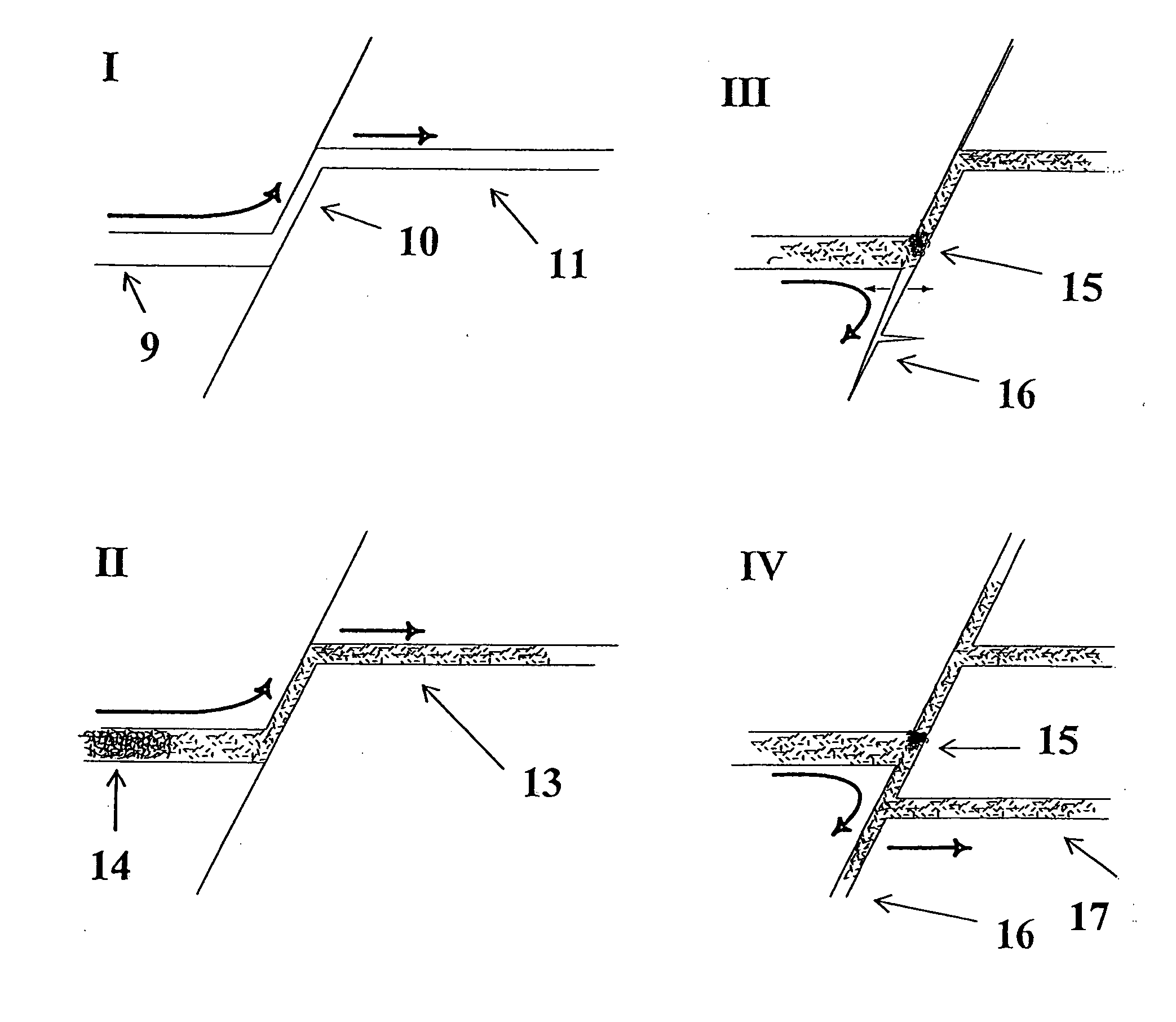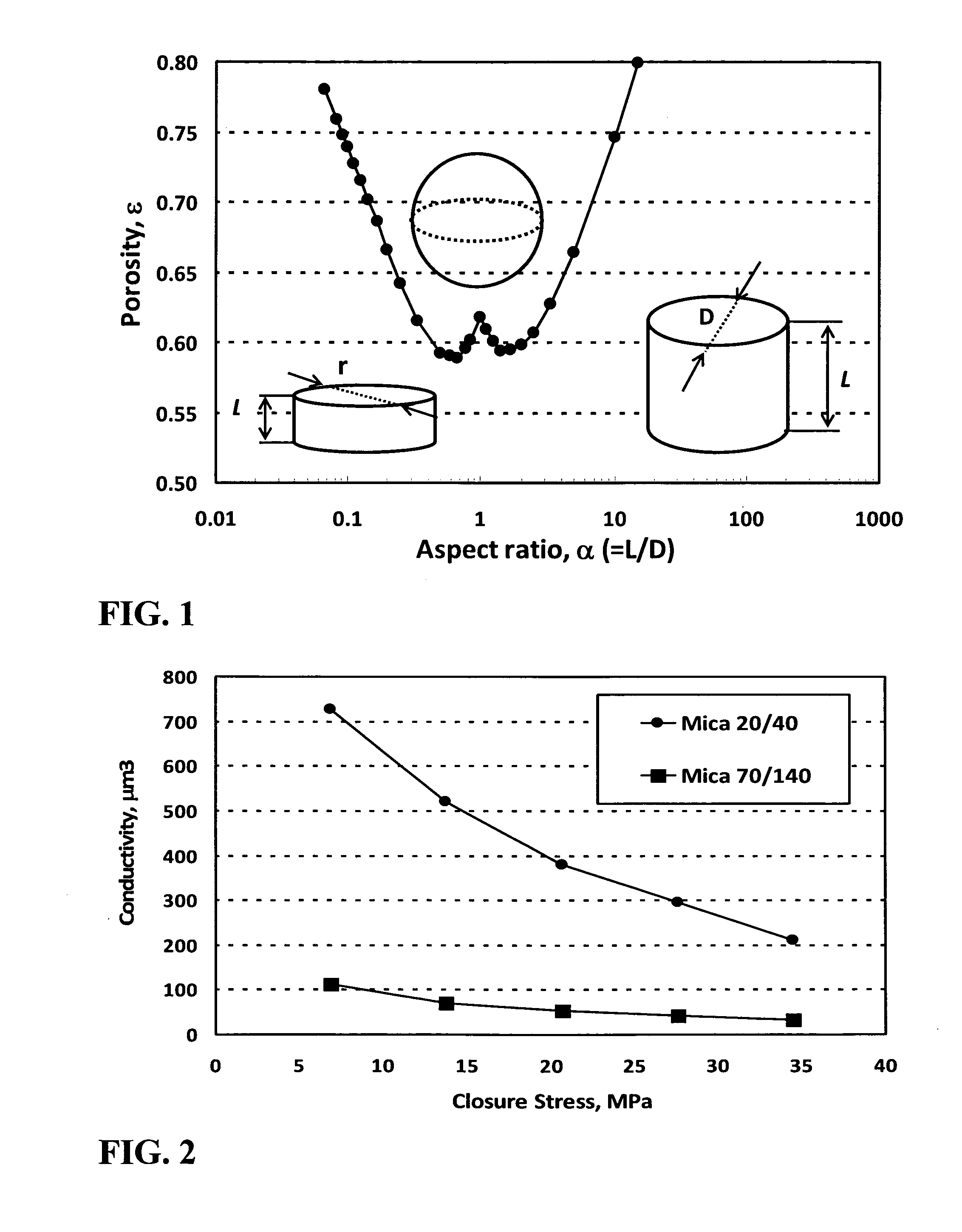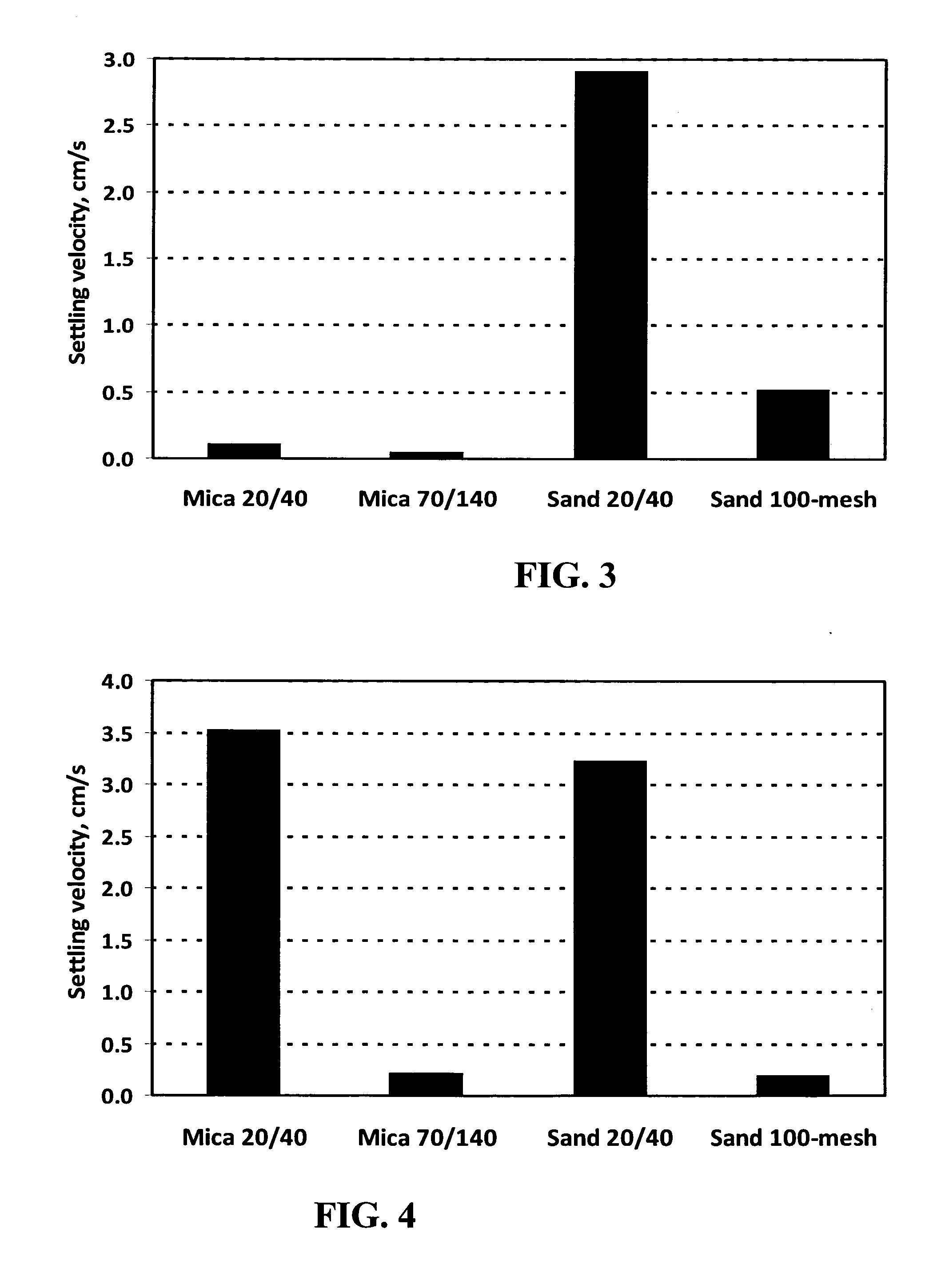Hydraulic Fracturing Proppants
a technology of hydraulic fracturing and proppants, applied in fluid removal, chemistry apparatus and processes, borehole/well accessories, etc., can solve the problems of limiting the application of spherical shape proppants and sands in some cases, reducing the conductivity of proppant packs, and limiting the application of non-conventional reservoirs
- Summary
- Abstract
- Description
- Claims
- Application Information
AI Technical Summary
Benefits of technology
Problems solved by technology
Method used
Image
Examples
example 1
[0045]FIG. 2 illustrates proppant pack conductivities of ground muscovite mica at a loading of 2.45 kg / m2 (0.5 lb-ft−2) between Ohio sandstone cores at 82° C. (180° F.)) under closure stresses of 6.9, 13.8, 20.7, 27.6, and 34.5 MPa (1000, 2000, 3000, 4000 and 5000 psi). The results were obtained in the laboratory in short term tests using API method RP-61.
example 2
[0046]FIG. 3 shows the experimental settling velocity of sand (at a concentration of 0.06 kg / L (0.5 lb / gal)) and muscovite mica particles (at a concentration of 0.036 kg / L (0.3 lb / gal)) of different sizes in slickwater containing 1 L / kL (1 gal / 1000 gal) of a friction reducer containing about 50% polyacrylamide. FIG. 4 gives settling velocities for the same types of particles calculated according to Stokes law, using specific gravities of 2.80 for mica and 2.65 for sand, and assuming a fluid viscosity of 10 cp. The plate-like particles settle at rates up to twenty times slower than theoretically predicted for spherical particles.
example 3
[0047]Transport properties of sand and mica were studied under dynamic conditions in the manifold system shown in FIG. 5. The system included a horizontal manifold having four outlets [1-4] made of Swagelok tubing having outer diameters of from 6.35 to 25.4 mm (0.25-1 in), equipped with a slurry tank [5] and a pump [6] (Moyno) providing a slurry flowrate up to 100 L / min. This manifold mimics a complex fracture network, for example in shale. The side flowloop [7] allowed reduction of the slurry flowrate down to 10 L / min without proppant settling in the pump. The original slurry consisted either of a linear gel containing 2.4 g / L (20 pounds per thousand gallons) of guar or of slickwater containing 1 L / kL (1 gal / 1000 gal) of polyacrylamide friction reducer; each fluid contained 0.06 kg / L (0.5 lb / gal) of proppant. Samples of slurry were collected from the outlets and analyzed for proppant content. Percent values shown in the Table below indicate the relative amounts of proppant transpor...
PUM
 Login to View More
Login to View More Abstract
Description
Claims
Application Information
 Login to View More
Login to View More - R&D
- Intellectual Property
- Life Sciences
- Materials
- Tech Scout
- Unparalleled Data Quality
- Higher Quality Content
- 60% Fewer Hallucinations
Browse by: Latest US Patents, China's latest patents, Technical Efficacy Thesaurus, Application Domain, Technology Topic, Popular Technical Reports.
© 2025 PatSnap. All rights reserved.Legal|Privacy policy|Modern Slavery Act Transparency Statement|Sitemap|About US| Contact US: help@patsnap.com



